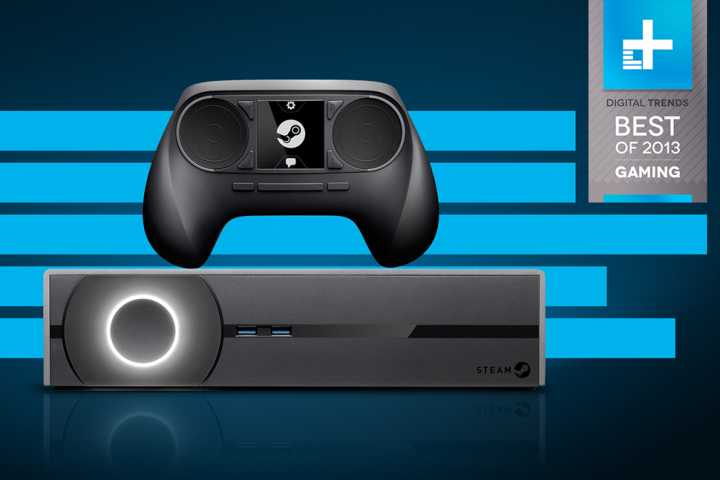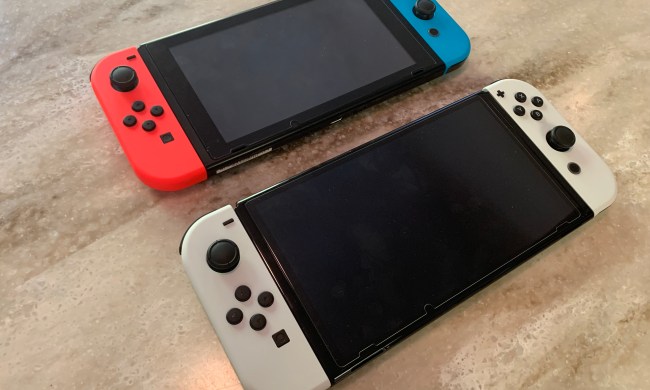
After a lot of thought and several discussions, we are proud to announce that Digital Trends’ gaming product of the year is Valve Corporation’s Steam. It wasn’t an easy decision, but it’s the only one that feels right to us.
It beat out a lot of tough competitors. In terms of hardware, 2013 was the biggest single year in decades, with two next-gen systems debuting within a week of each other. Handheld systems also saw a huge increase in sales, especially the Nintendo 3DS, which may have single handedly kept Nintendo afloat while the Wii U struggled.
Yet when it came time to select a single product to award our best of the year in gaming, the choice was clear. Between the PlayStation 4 and Xbox One, both systems have their highs and lows, and despite claims from fans on both sides, neither truly outstrips the other. They are excellent systems, and both will continue to make a major impact in the gaming industry. But quietly, Valve may have changed the way we look at gaming.

It’s been building for years, but the explosion of “Big Picture” mode was an important milestone in gaming that established Steam as a living-room presence . The announcement of Steam Machines – essentially PCs built to act like consoles – sent shockwaves through the gaming industry. We won’t actually see what those systems can do until 2014, but the magnitude of their potential is already being felt.
Disruption defines what Valve is all about. Look at the Steam Controller, which uses dual circular trackpads rather than joysticks. Whether or not it’s a success, it establishes a new, disruptive approach for interfacing with video games. We saw what a similarly innovative move could do when Nintendo introduced the Wii Nunchucks. They led to Sony’s Move controller, which in turn influenced the PlayStation 4’s new DualShock 4 controllers. You can argue that Nintendo’s gesture-based controllers led to, or at least influenced, the development of the Kinect as well, which is finding uses even outside of gaming. And all it took was one company thinking differently.
It’s too early to tell if the Steam Controllers will be anywhere near as revolutionary, but they have people paying attention. And thinking. We recently spoke to Sony Online Entertainment President John Smedley about the future of gaming, and he singled the Steam Controller out for the same reasons we’re interested in it.
“I was very heartened to see Steam’s invention of a new controller,” Smedley told us. “I’m not saying I like it or dislike it – I’m just saying it’s time somebody is innovating.”
Above it all, that’s what makes Steam our product of the year: innovation and disruption.
While the relatively similar next-gen systems battled back and forth for the headlines, Valve took Steam in a different direction. One advantage console users have had over PC gamers in the past is the ability to loan out physical discs. When Microsoft’s new hardware looked like it wasn’t going to allow this, gamers voiced their rage and Microsoft changed its policies to keep an old tradition alive. Steam, on the other hand, introduced the ability to share titles digitally. Valve took an old concept in a whole new, forward-looking direction.

Then there are the games themselves. While Microsoft and Sony were both taking criticism for the lack of backward compatibility in their new hardware, Steam topped 2,500 games in its library in 2013, many of which are from indie studios that aren’t nearly as prolific on consoles. That’s changing, but consoles are still far behind. Linux integration also came to some Steam games this year, and the new SteamOS is currently available.
Competition is always a good thing, and Steam, which registered over 7 million concurrent users this year, is proving to be a powerful competitor. The platform currently accounts for 70 percent of all PC game sales, and now it has its eye on the console market. Steam Machines should directly challenge the consoles.
In 2013, Valve shook the gaming industry with little fanfare, only a handful of ads, and under the shadow of next-gen consoles manufactured by two of the world’s biggest companies. Thanks to the next-gen consoles, 2014 was always going to be an important year for the gaming industry. With the rise of Valve and the expansion of Steam, it is likely to be a pivotal one as well.


